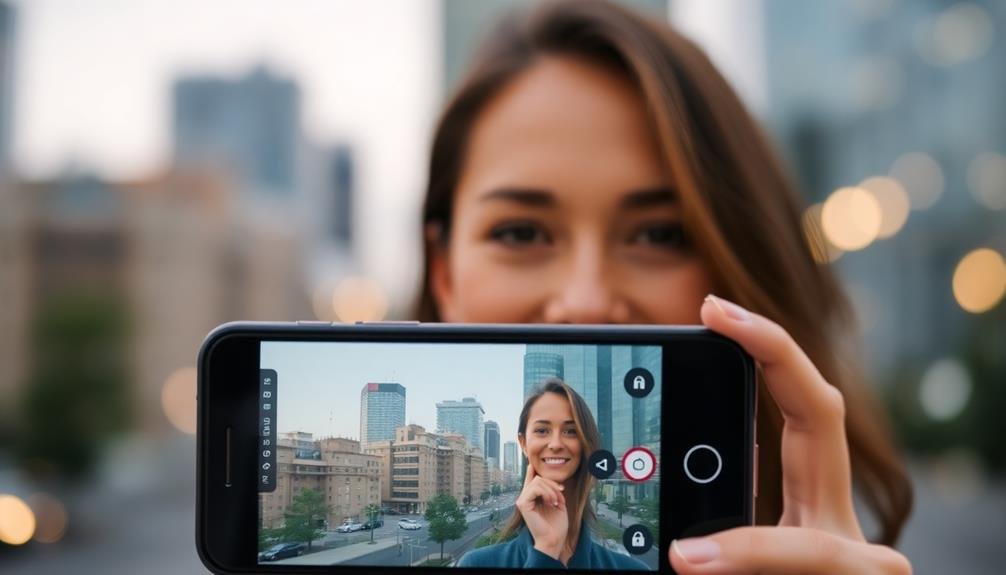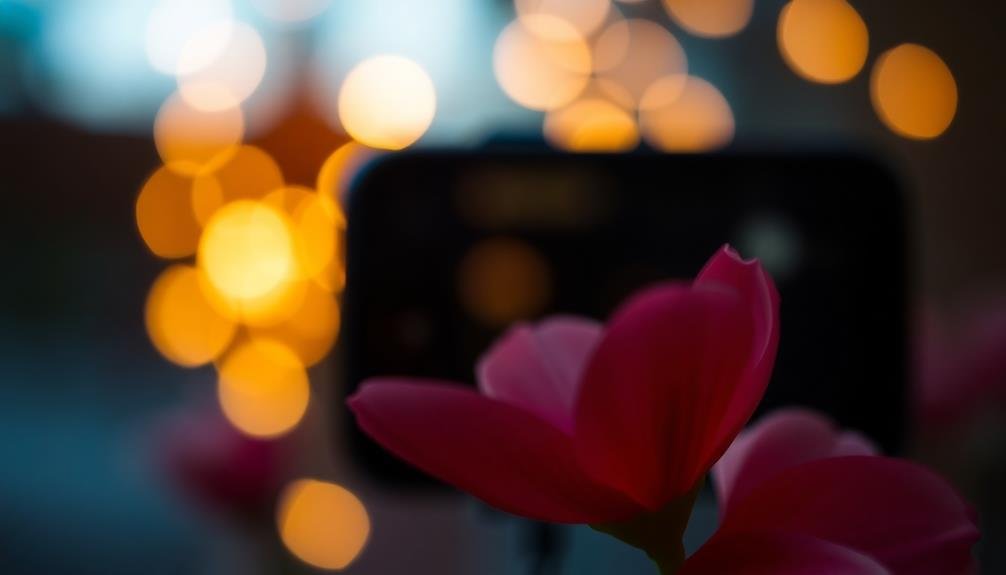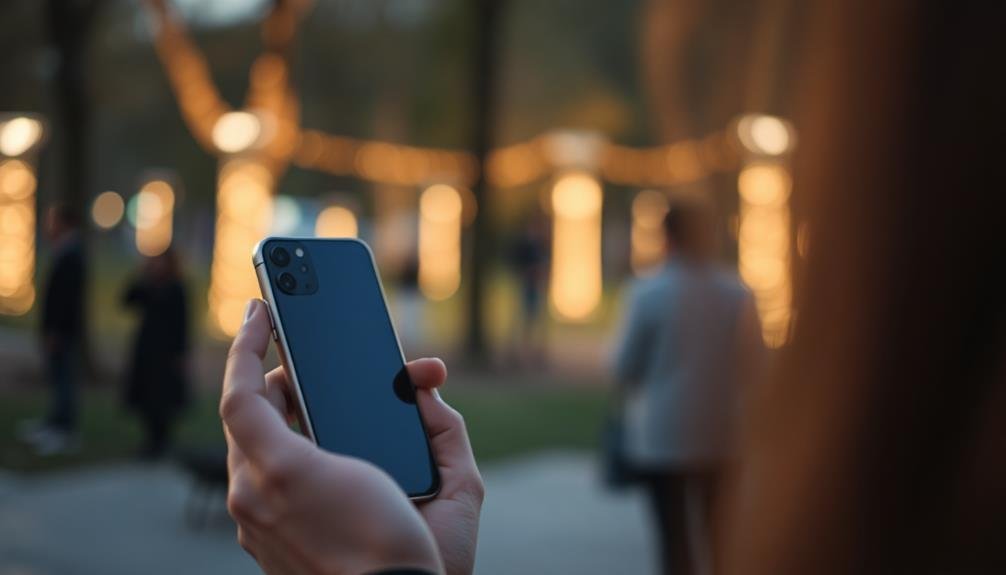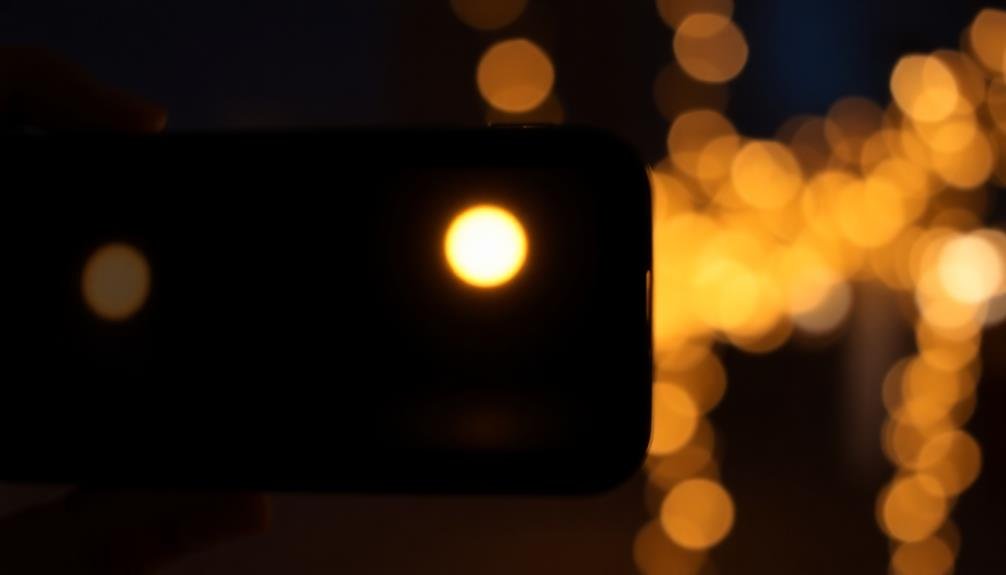To achieve stunning bokeh on your mobile, start by utilizing Portrait Mode. This feature uses AI algorithms to simulate shallow depth of field, automatically blurring backgrounds for that coveted effect. Next, adjust your aperture settings in your camera's "Pro" or "Manual" mode. A wider aperture (lower f-number) creates a more pronounced bokeh effect. Finally, create distance between your subject and the background. Position your main subject a few feet away from background elements to enhance separation and amplify the bokeh. By mastering these three techniques, you'll be well on your way to capturing professional-looking shots with beautiful, dreamy backgrounds.
Utilize Portrait Mode

Smartphones have revolutionized the way we capture bokeh. Portrait mode, a feature available on most modern devices, is your go-to tool for creating stunning bokeh effects. This mode uses advanced algorithms and multiple camera lenses to simulate the shallow depth of field typically achieved with high-end DSLR cameras.
To utilize portrait mode effectively, start by selecting it in your camera app. Position your subject within 2-8 feet of the camera, guaranteeing they're well-lit and stand out from the background. The AI will detect the subject and automatically blur the background, creating that coveted bokeh effect.
Experiment with different distances and angles to enhance the bokeh. Move closer to your subject for a more pronounced effect, or step back to include more of the background in the frame. Pay attention to the edges of your subject, as portrait mode can sometimes struggle with complex outlines.
Don't limit yourself to just people; portrait mode works well with objects too. Try capturing flowers, pets, or still life compositions. Remember to tap on your subject to guarantee proper focus and exposure.
With practice, you'll master the art of mobile bokeh using portrait mode.
Adjust Aperture Settings

Aperture adjustment is a game-changer for mobile bokeh enthusiasts. Many modern smartphones offer manual control over aperture settings, allowing you to fine-tune the depth of field in your photos. A wider aperture (lower f-number) creates a shallower depth of field, resulting in more pronounced bokeh effects.
To adjust your aperture, open your camera app and look for the "Pro" or "Manual" mode. Locate the aperture setting, usually denoted by an "f/" symbol. Experiment with different f-numbers to see how they affect your background blur. Remember, the lower the f-number, the more bokeh you'll achieve.
Keep in mind that your phone's physical aperture might be fixed, but software simulations can still produce convincing bokeh effects. In this case, you'll be adjusting a virtual aperture. Pay attention to the edges of your subject when using these simulations, as they can sometimes appear artificial.
When adjusting aperture, consider your subject's distance from the background. The further your subject is from the background, the more pronounced the bokeh effect will be.
Combine this knowledge with appropriate aperture settings to create stunning, professional-looking photos with beautiful background blur.
Create Distance Between Subjects

One of the most effective techniques for enhancing bokeh in mobile photography is creating distance between your subject and the background. This separation amplifies the depth-of-field effect, making your subject stand out while blurring the background more prominently.
To achieve this, position your main subject at least a few feet away from any objects in the background. You'll want to get close to your subject while ensuring there's ample space behind it.
This approach works particularly well for portraits, where you can place the person against a distant backdrop like trees or city lights. For smaller subjects, such as flowers or products, try using a plain surface as your shooting area and position the background elements far behind.
Frequently Asked Questions
Can I Achieve Bokeh Effects With Older Smartphone Models?
You can achieve bokeh effects with older smartphones, but it's challenging. Try using portrait mode if available, or manually focus on a close subject. Third-party apps can also help simulate bokeh on older models.
How Does Lens Focal Length Affect Bokeh in Mobile Photography?
Lens focal length greatly impacts bokeh in mobile photography. You'll get more pronounced bokeh with longer focal lengths. They compress the background, creating a shallower depth of field. Shorter focal lengths produce less noticeable bokeh effects.
Are There Any Third-Party Apps That Enhance Bokeh on Smartphones?
You'll find several third-party apps that can enhance bokeh on your smartphone. Try popular options like Focos, AfterFocus, or Snapseed. They offer advanced controls for adjusting blur, depth, and focus to create stunning bokeh effects.
What Lighting Conditions Work Best for Creating Bokeh on Mobile Devices?
You'll get the best bokeh in low-light situations with bright, isolated light sources. Try shooting at night with street lamps or fairy lights. Sunsets and candlelit scenes also work well. Avoid harsh midday light for ideal results.
Can I Add Bokeh Effects to Existing Photos on My Smartphone?
Yes, you can add bokeh effects to existing photos on your smartphone. Many photo editing apps offer bokeh or blur tools. You'll be able to adjust the intensity and focus area to create a pleasing bokeh effect.
In Summary
You've now got the tools to create stunning bokeh effects on your mobile device. Remember to leverage Portrait Mode, experiment with aperture settings, and play with subject distance. Don't be afraid to get creative and push your phone's camera to its limits. With practice, you'll soon be capturing professional-looking photos with beautifully blurred backgrounds. Keep experimenting, and you'll find your unique style in no time. Happy shooting!





Leave a Reply